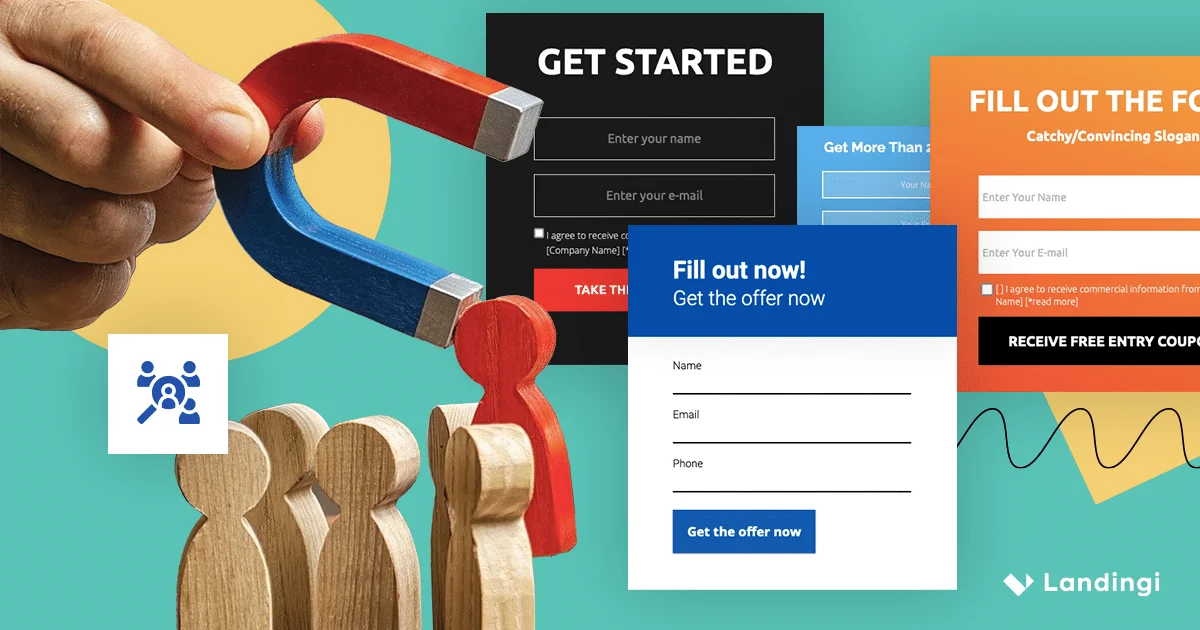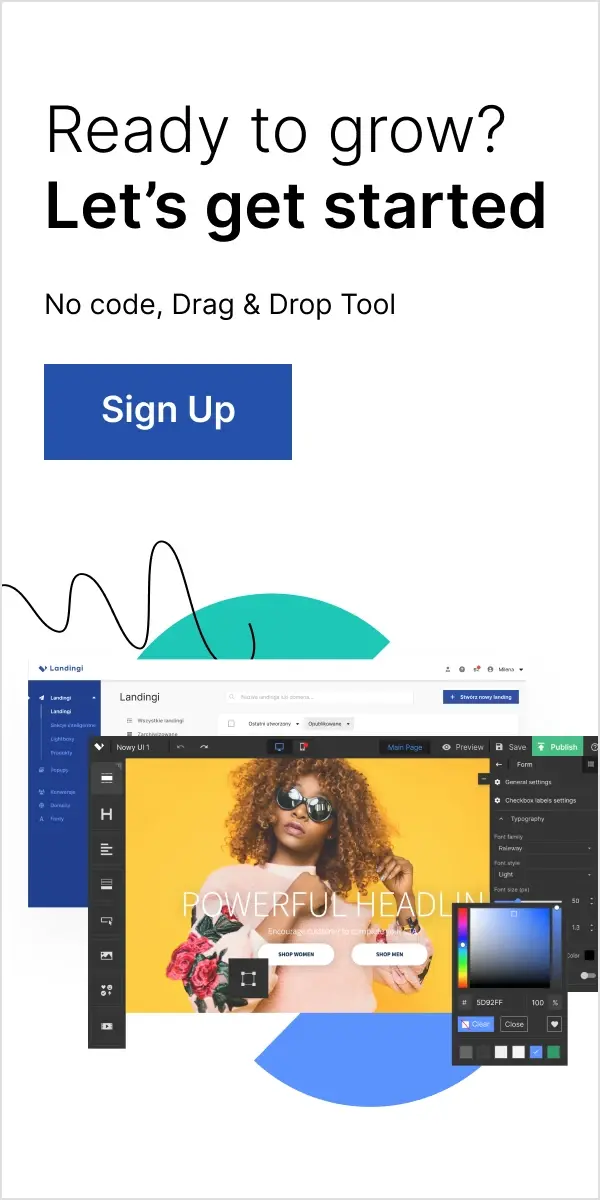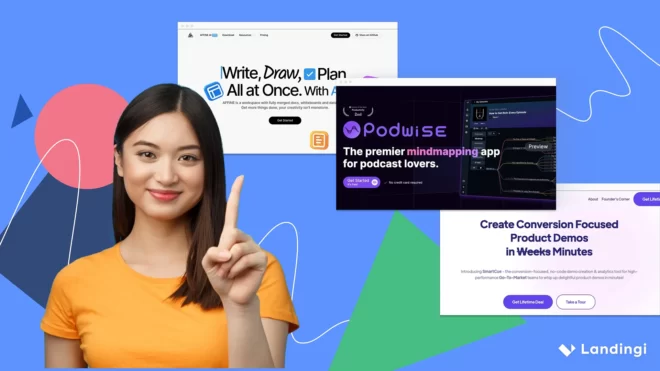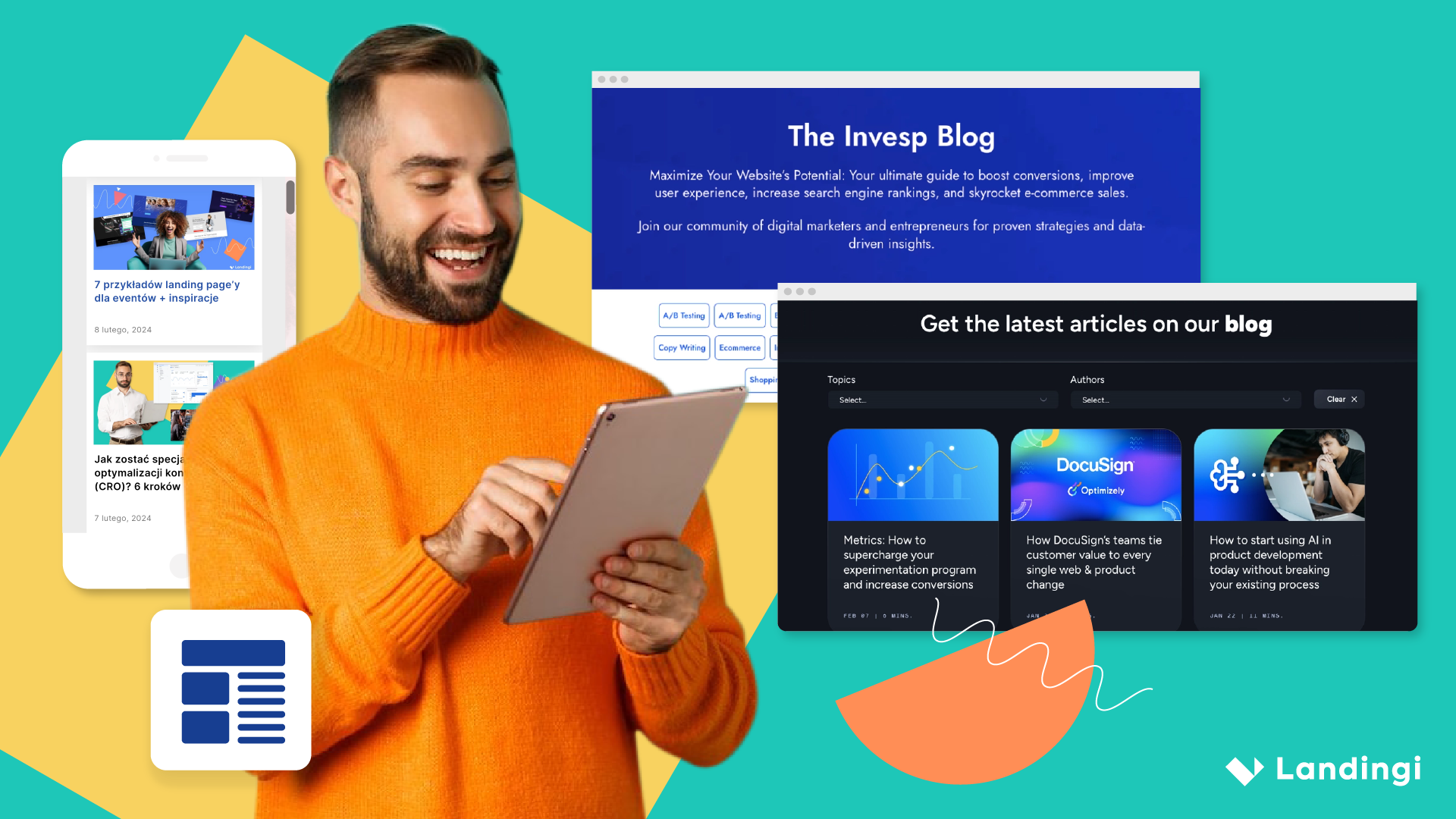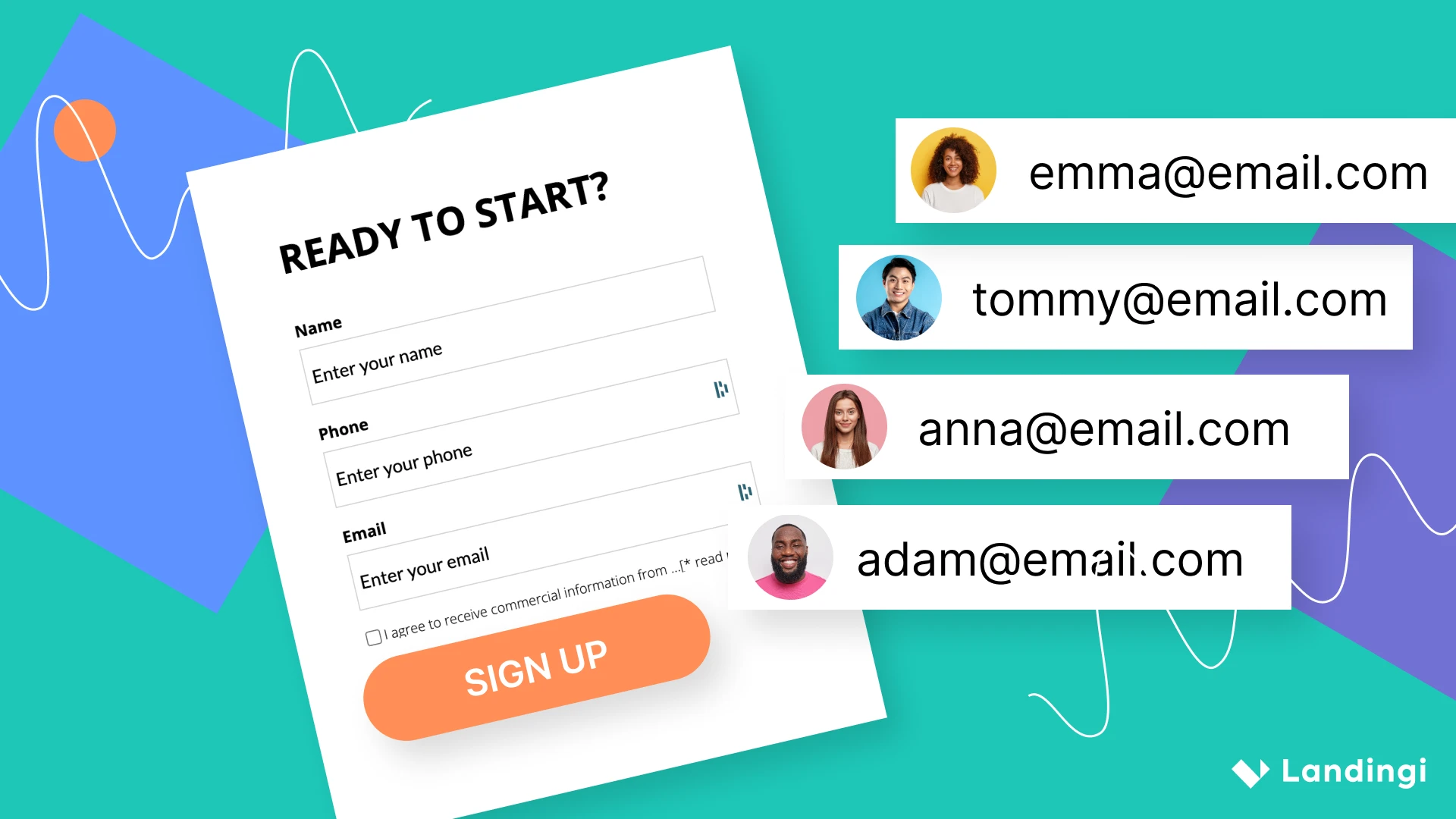When Ron Karr says that “the way you position yourself at the beginning of a relationship has a profound impact on where you end up” (M. McDermott, What’s the Real Cost of Your Forgotten Leads?, 2020), he means primarily… leads.
Yes, lead generation (out of digital marketing also known as prospect acquisition) is a crucial aspect of any successful marketing strategy. Ruler Analytics reports that it’s the key goal for 91% of marketers (L. Caveney, 35 Lead Generation Statistics and Trends for 2023). Whether you’re looking to capture potential customers’ information for follow-up or grow your email list, lead generation forms are a vital tool in your arsenal.
Along with sign-up or contact sheets and questionnaires, forms provide you with data of your clients in spe, which enables you to prepare well-targeted and effective marketing campaigns.
Make your sections smartable and let go of mundane manual tasks with Smart Sections! An easy way to manage bulk changes.
In this article, we’ll explore the world of lead generation forms, covering what they are, how to measure their effectiveness, as well as best practices for creating them. Finally, we’ll provide you with the following examples of the best lead-generation forms:
- Best Sales Contact Lead Generation Form: Hire with Near
- Best Registration Lead Generation Form: Similarweb
- Best Event Registration Lead Generation Form: Guru Conference
- Best Newsletter Lead Generation Form: Morning Brew
- Best Donation Lead Generation Form: Mind
- Best Popup Lead Generation Form: Chetu & Sumo
- Best Facebook Lead Generation Form: WebFX
- Best B2B Lead Generation Form: IDC
What is a Lead Generation Form?
The lead generation form is:
a digital form designed to collect information from individuals who are interested in your products, services, or content.
Typically found on websites, landing pages, or within emails, these forms prompt users to enter their contact details, such as names, email addresses, phone numbers, and more. The primary goal is to turn anonymous website visitors into leads that can be nurtured and eventually converted into customers.
How do you Measure the Effectiveness of a Lead Generation Form?
A/B tests are the tool with the greatest potential here. Convert’s report states that the average increase in CR after implementing changes based on A/B testing results (only those that reached statistical significance) is 61% (D. D. Hutt, 42 Conversion Rate Optimization and A/B Testing Stats For 2022)!
Yes, measuring the effectiveness of your lead generation forms is essential to understand how well they are performing. Key metrics to consider include:
- Conversion Rate: The percentage of visitors who complete the form compared to the total number of visitors who viewed it
- Cost per Lead: Calculate the cost associated with acquiring each lead through your form, factoring in ad spend and other expenses.
- Form Abandonment Rate: The rate at which users start filling out the form but leave before completion.
- Quality of Leads: Assess the leads’ quality by analyzing how many eventually convert into customers or take desired actions.
- Lead Source: Determine which channels or sources generate the most leads through your forms.
What are the Best Practices for Creating Lead Capture Forms?
Creating effective lead capture forms requires careful planning and execution. Here are some best practices to follow:
1. Keep it Simple: Ask for only essential information to minimize friction and increase conversion rates.
2. Use Clear and Compelling Copy: Craft persuasive headlines and form labels that convey the value of what users will receive in exchange for their information.
According to HubSpot, “Lead-capture forms gather information from potential customers in exchange for an offer or a piece of content” (S. Goliger, The 7 Best Practices for Building Fantastic Lead-Capture Forms, 2022). It’s true, but it works well only if the form is properly designed and the offerings behind it are relevant to your audience.
3. Mobile Optimization: Ensure your forms are mobile-friendly to accommodate users on various devices.
4. Progressive Profiling: For returning visitors, collect additional information gradually over time rather than overwhelming them with a lengthy form.
5. Privacy and Trust: Include a privacy statement to reassure users that their information will be handled securely and transparently.
6. A/B Testing: Continuously test different form elements, layouts, and copy to optimize for higher conversions.
How to Optimize Lead Gen Form?
To optimize your lead generation forms further, consider the following tips:
- Use Smart Fields: Utilize dynamic forms that adapt based on what information the user has already provided.
- Add Social Proof: Display testimonials, trust badges, or mentions of reputable clients to build trust.
- Implement Conditional Logic: Show or hide form fields based on user responses to previous questions.
- Auto-fill and Autofocus: Simplify the user experience by automatically filling in known information and setting the cursor to the first field.
What are the Best Lead Generation Form Examples?
Best lead generation forms differ from each other depending on their goal and industry as well. Thus it’s reasonable to present a few different examples for each marketing purpose separately. With such a little disclaimer, let’s kick things off!
#1 Best Sales Contact Lead Generation Form: Hire with Near
The most effective sales contact lead generation form is by Hire with Near – just for a smart trick accelerating communication.
A study based on 650.000 Formstack forms found the conversion rate for contact forms to be about 1% (H. Pun, What Is the Average Conversion Rate? The New Data Will Surprise You).
One reason for this is that it typically takes ages from the time the form is filled out to when some value is received by a user. Hire with Near aims to shorten this process by asking for information in the contact form that would otherwise be sought in later communication. This is one of a few cases where it’s unwise to limit field numbers.
On the flip side, the said landing page lacks some visuals to drive a positive vibe and leverage user experience.
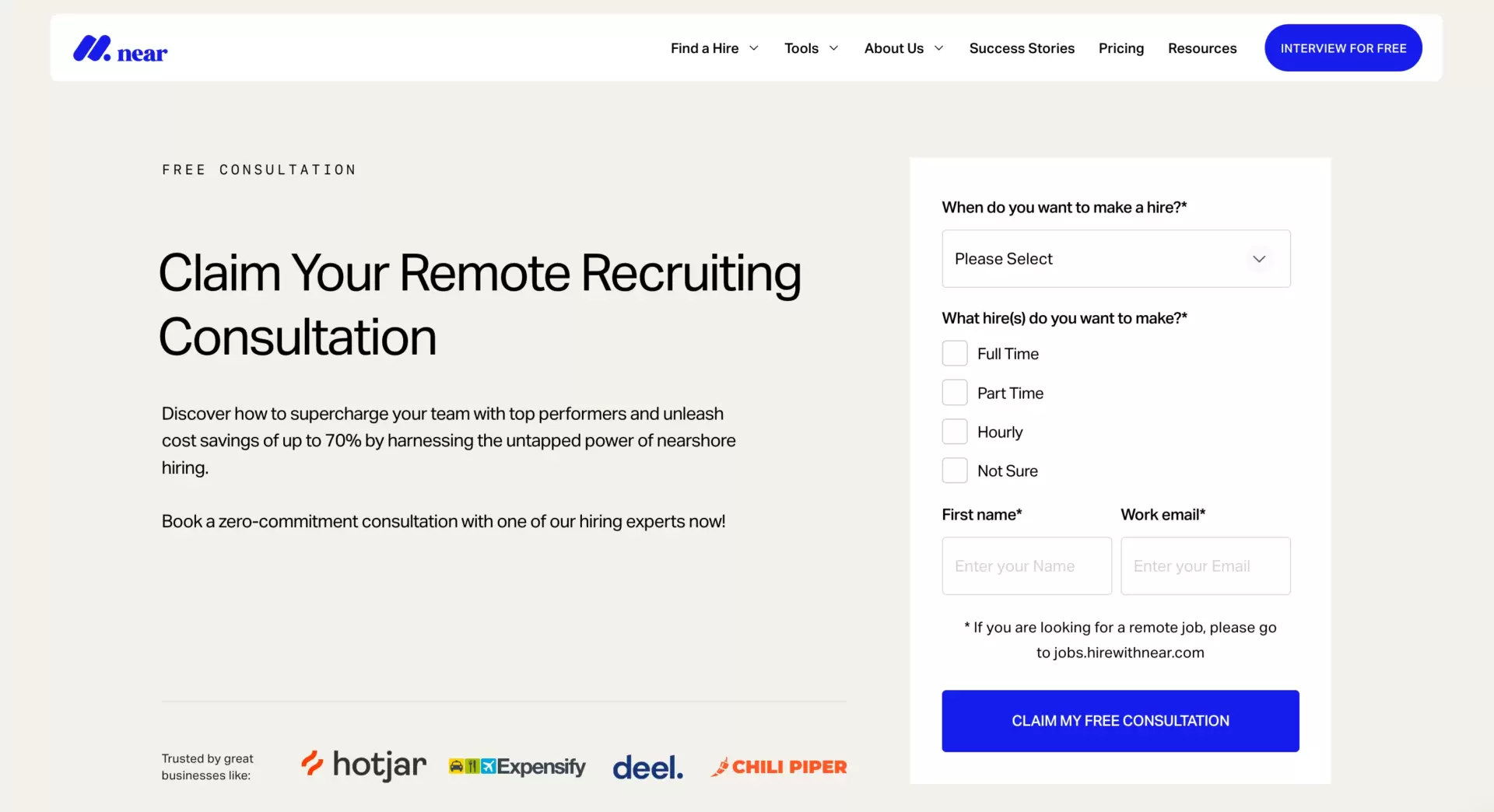
#2 Best Registration Lead Generation Form: Similarweb
The best registration lead generation form is one by Similarweb due to the reduced number of fields and simplicity.
Registration lead gen form typically features a clean layout and intuitive fields that make the registration process quick and painless, encouraging higher completion rates.
In Omnisend’s research signup rate for one-field sign-up forms reached 7.5%, while forms with more fields didn’t even come close to the 5% level (B. Meyer, The best signup forms for high conversions, 2022)! Similarweb probably knows it well, as we can deduce it from the example below:
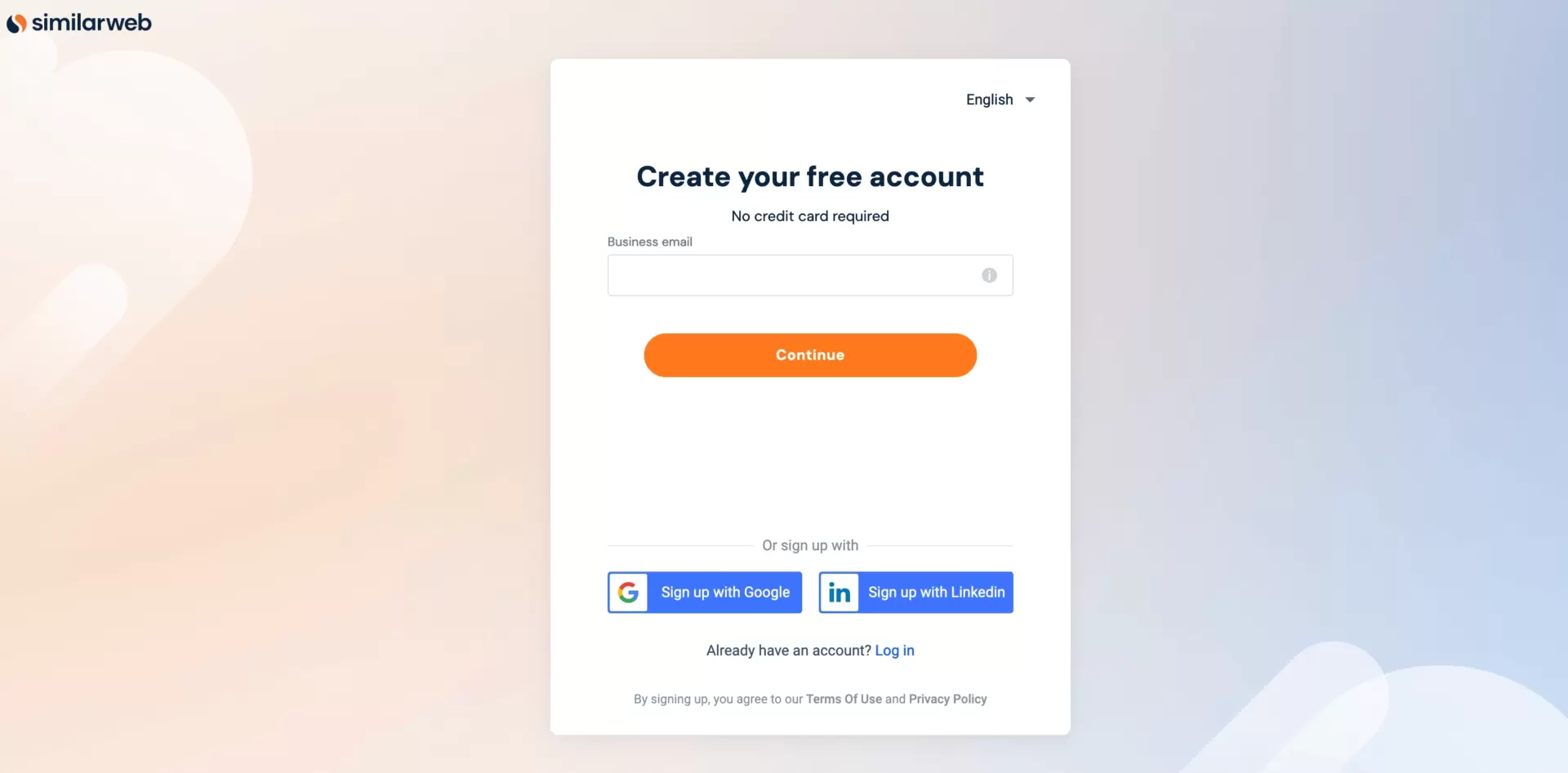
The subheadline (“No credit card required”) conveying additional value is another smart trick to increase conversions, however, the font used is too small, and the key message may be overlooked.
#3 Best Event Registration Lead Generation Form: Guru Conference
The best-converting event registration lead generation form is – because of its outstanding design – the one by Guru Conference.
Forms of that kind should be appealing to evoke positive emotions around the event. That way, an event may seem more inviting and accessible to the hesitant. Have a look at this fresh, vivid design below, made up of vibrant elements, fonts, and shining colors.
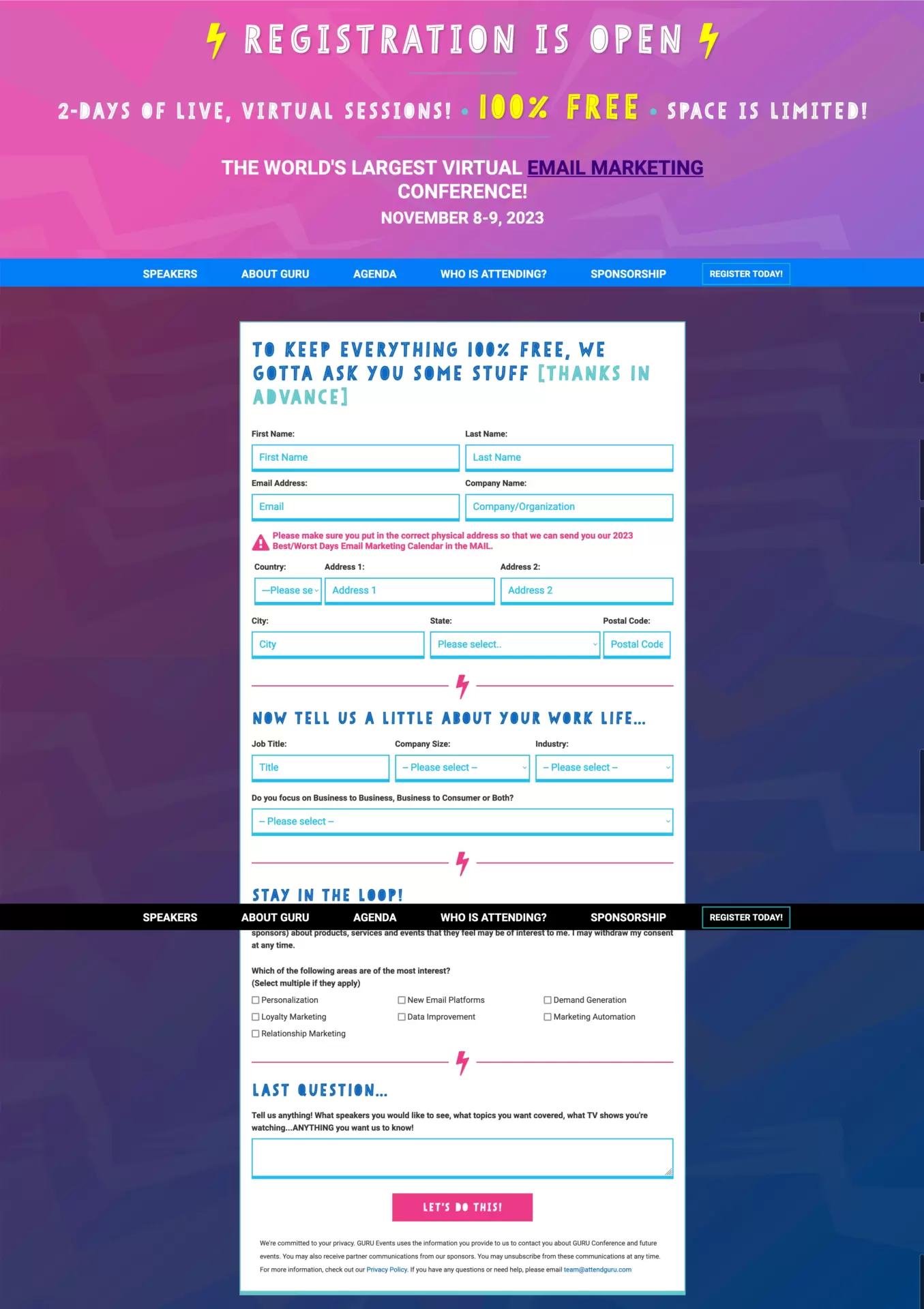
Also, the copy is well-considered and polished. It emphasizes that no-cost participation is the award for filling in such a long form. Apart from this clever incentive, it utilizes a sense of urgency (“space is limited”).
So where are shortcomings? Almost all the fields are required. Someone who objects to just one field will not fill in the form at all! In the case study described by Econsultancy the non-mandatory form resulted in a 31% higher conversion of visitors to leads, with these leads being more likely to make purchases (J. Rondeau, How to optimize your lead generation forms: three case studies, 2013).
Info: In Landingi, you have at your disposal a ready-to-use form builder, which allows you to choose a design fitting your needs and then personalize it with style elements, fields, checkboxes, additional options like autoresponder, etc.

#4 Best Newsletter Lead Generation Form: Morning Brew
The most powerful newsletter lead generation form was created by Morning Brew, as sometimes… conciseness is the key!
In the case of a newsletter, it’s essential to ensure the form is short, asking only for necessary information like name and email to reduce friction and increase completion rates. Additionally, it’s important to clearly communicate the value the subscriber will receive, such as the type of content, frequency of emails, and any exclusive benefits.
Check the following example by Morning Brew. Note that instead of highlighting news-sharing, they will communicate why the shared news may be valuable for subscribers. Good job!
One thing to be improved is the overall design. Marketing Experiments reports that 46% of marketers are sure that form layout influences its conversion rate (E. Giles, The 50 Best Landing Page Statistics That Help Drive Conversions, 2020), and this opinion isn’t pulled from the void.
It’s good that the layout below is clear, but it could gain more if discreetly enriched with some visuals.
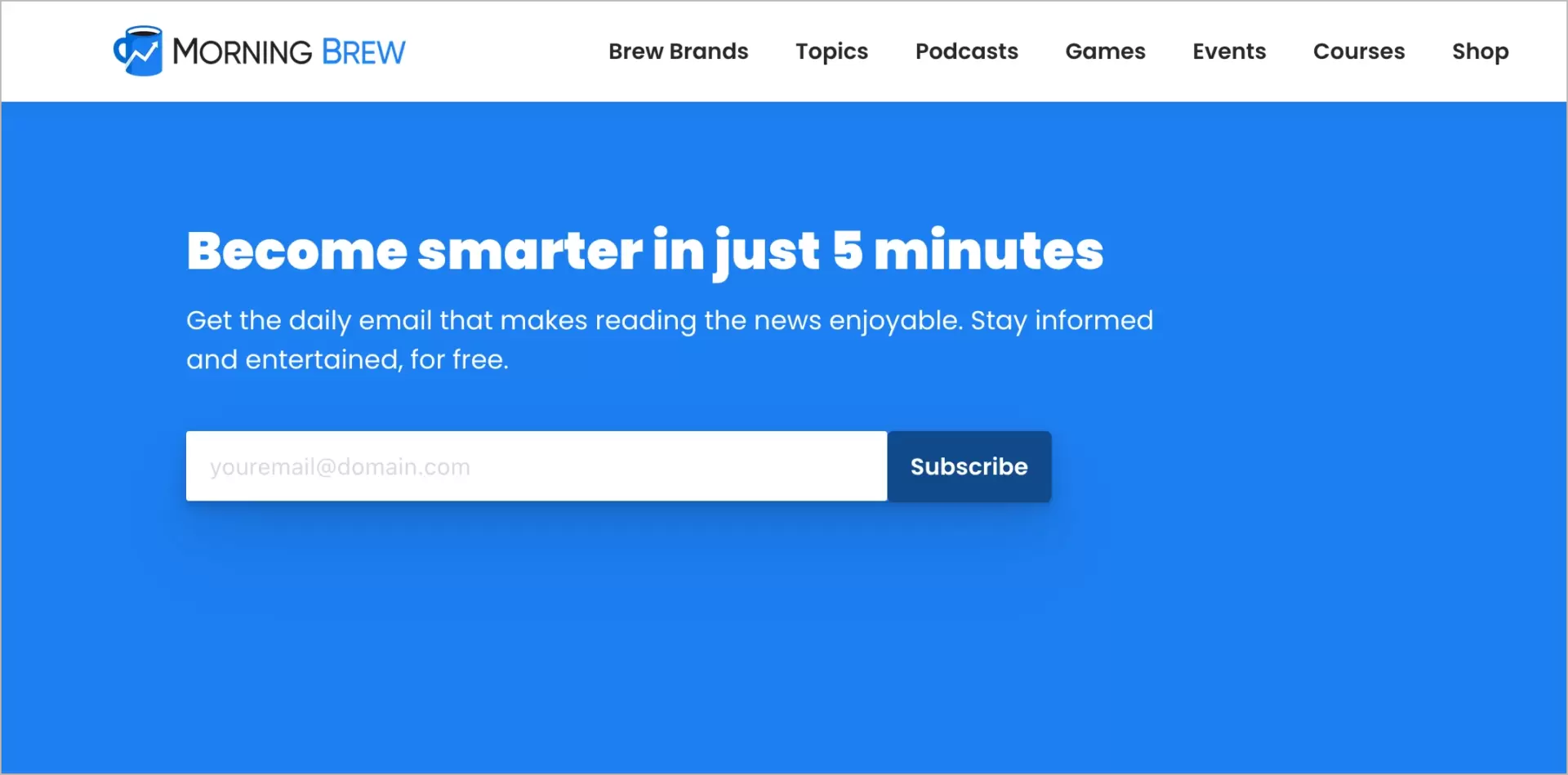
#5 Best Donation Lead Generation Form: Mind
The best donation lead generation form is by Mind, which exploited a clever rule saying “Limit typing to the max!”.
Creating an effective donation form is always a hard nut to crack. A study conducted by Formstack revealed that the average conversion rate for them in 2014-2015 was 4-7%, while the overall CR for lead gen forms benchmarked the same way hit 7% (A. Nanji, Conversion Benchmarks for Seven Types of Online Forms).
To tackle it, Mind divided the process into two stages using a multi-step form. But does it actually work?
Well, Venture Harbour reports an optimization case based on changing a basic WordPress contact form to a multi-step one. CR increased from 0.96% to 8.1%, which translates into a 743% rise in leads. In the other case, they changed the simple form to a multi-step “tool-like” form, and the conversion rate increased over three times, from 11% to 46% (M. Taylor, Why Multi-Step Lead Forms Get up to 300% More Conversions, 2023)!
Also, it’s noteworthy that in the Mind’s form, the first step doesn’t require typing anything. All information is entered with just a few clicks into the appropriate fields.
One thing to improve is the main CTA color. It’s the same as that of the selected boxes, which makes it hardly visible.
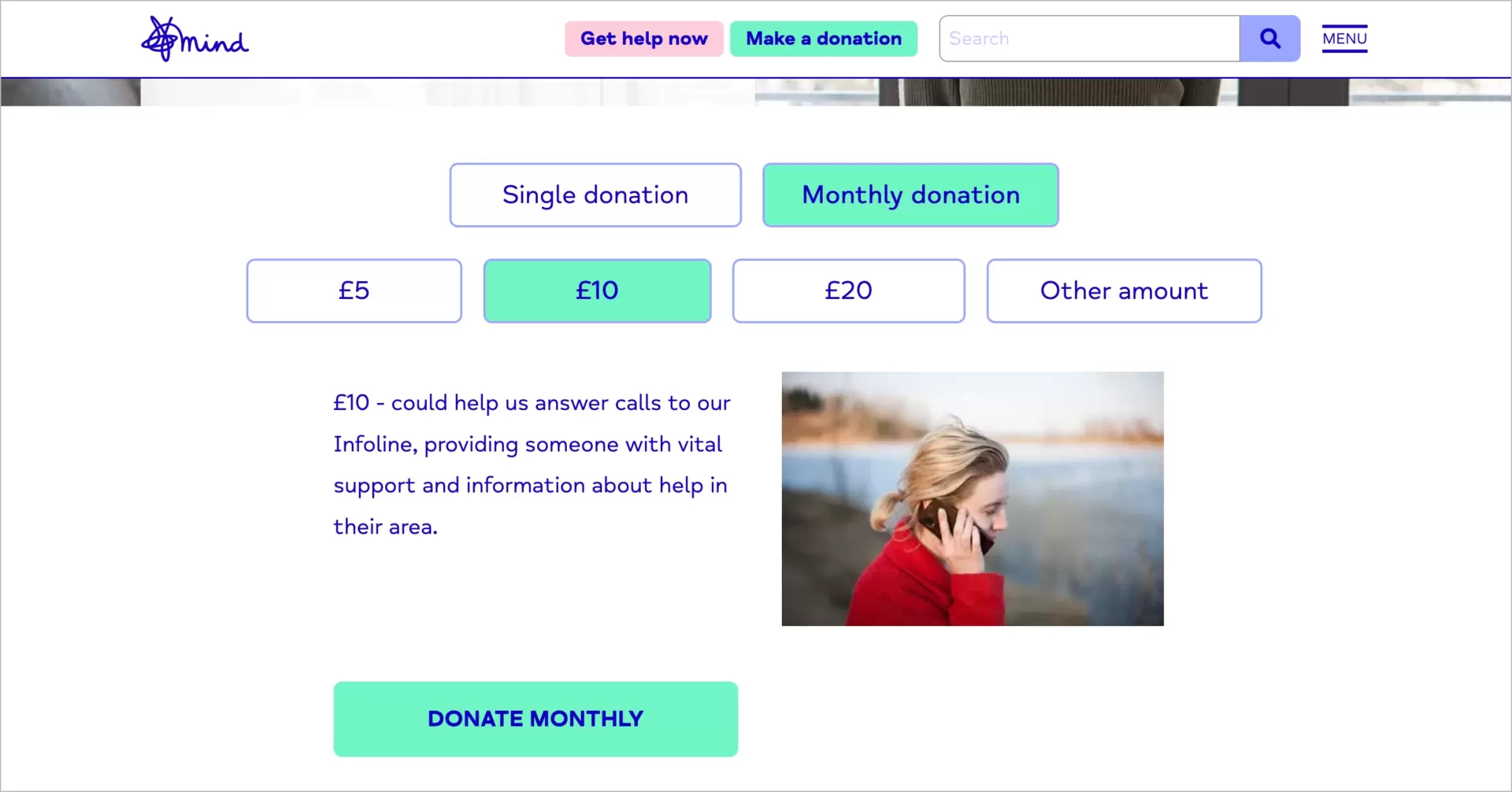
#6 Best Popup Lead Generation Form: Chetu & Sumo
Best popup lead generation forms are ex aequo by Chetu and Sumo, who rely on incentives and well-elaborated CTAs.
The average conversion for pop-ups is around 3% (S. Edwards, On-Screen Pop-Ups: Annoying, But Are they Effective?, 2022). Yeah, sounds poor, yet there are a few ways to rise above it.
The first one is to offer an incentive or free resources in exchange for data. The second is to make a form visually appealing – simply. Wisepops’s research proved that popups that include images converted 4.96% of visitors, while the ones without them had a CR of 2.85% (P. Lawrowski, Popup Statistics: Wisepops Research [513M Displays]). These lessons have been learned by Chetu:
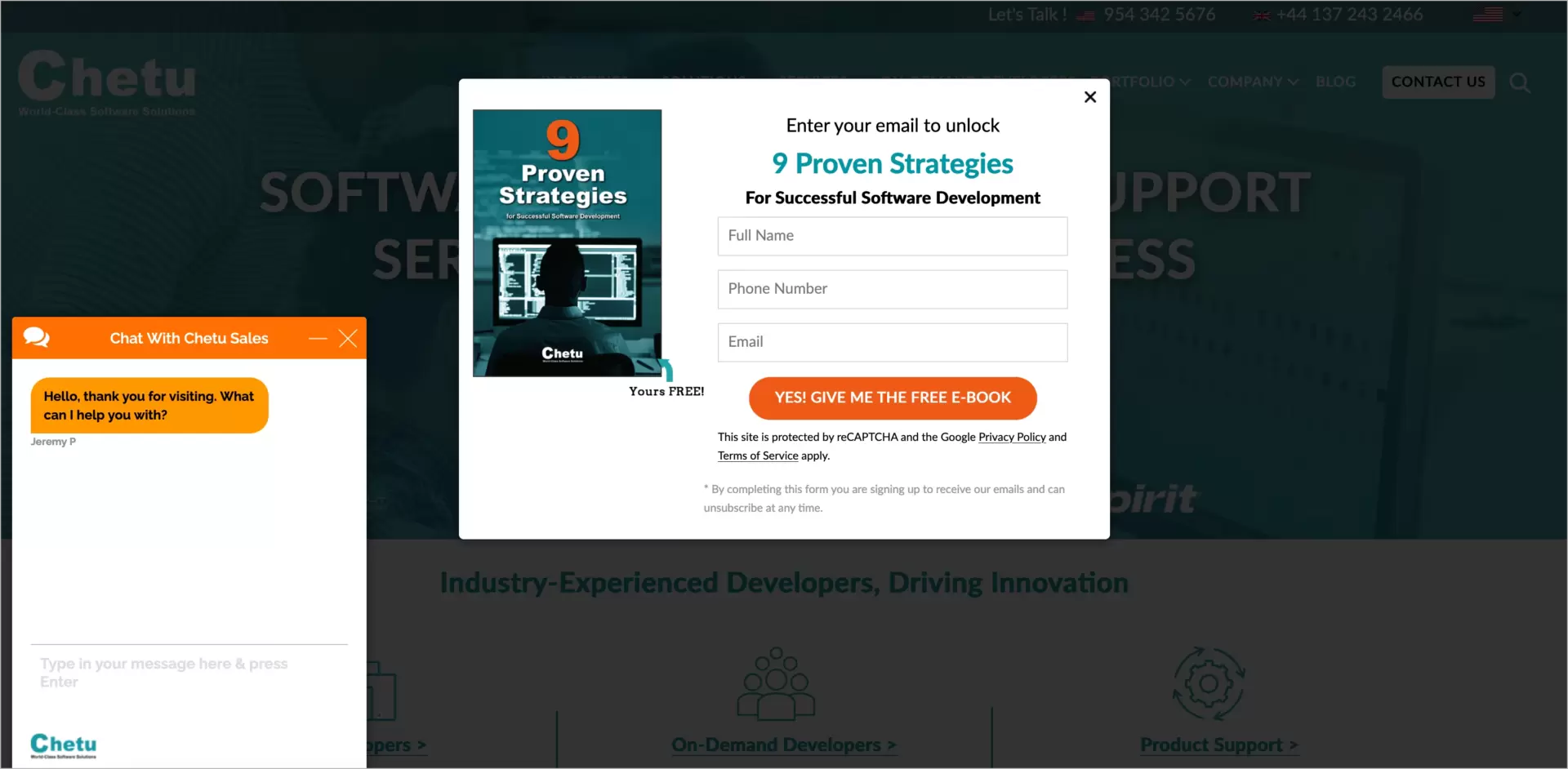
An even better solution is to limit the form fields to one and shorten the CTA, like Sumo did in the following pop-up form:
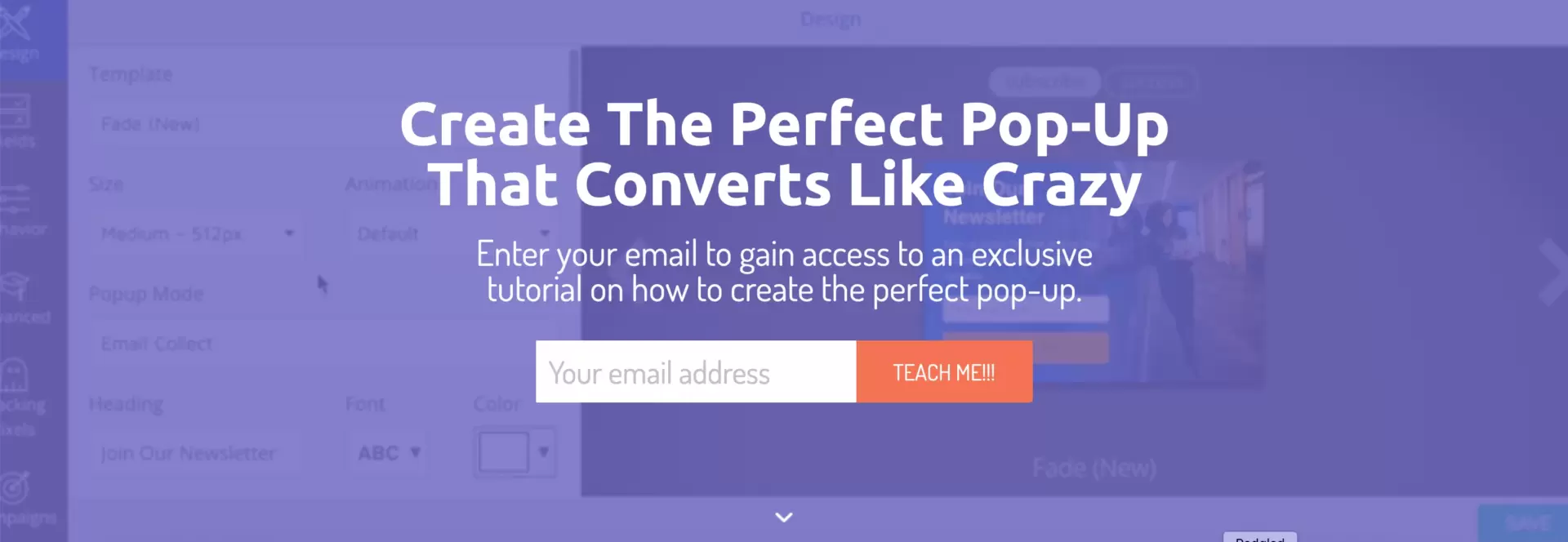
#7 Best Facebook Lead Generation Form: WebFX
The most efficient Facebook lead generation form (tough absent on Facebook!) is one by WebFX.
Forms on Facebook allow businesses to create customizable questionnaires directly on the platform, which can be attached to their ads or posts. When users click on these forms their contact information can be pre-populated based on their Facebook profile data, making it easy for them to sign up for more information, offers, and other business-related inquiries. This is the main advantage of FB forms compared to ones from websites or landing pages.
Nevertheless, the tool is still rarely ever used. Look at the WebFX form below, which is displayed after clicking the CTA button on their FB profile. The link redirects users to their site. Wouldn’t it be easier to have that form appear right on Facebook?
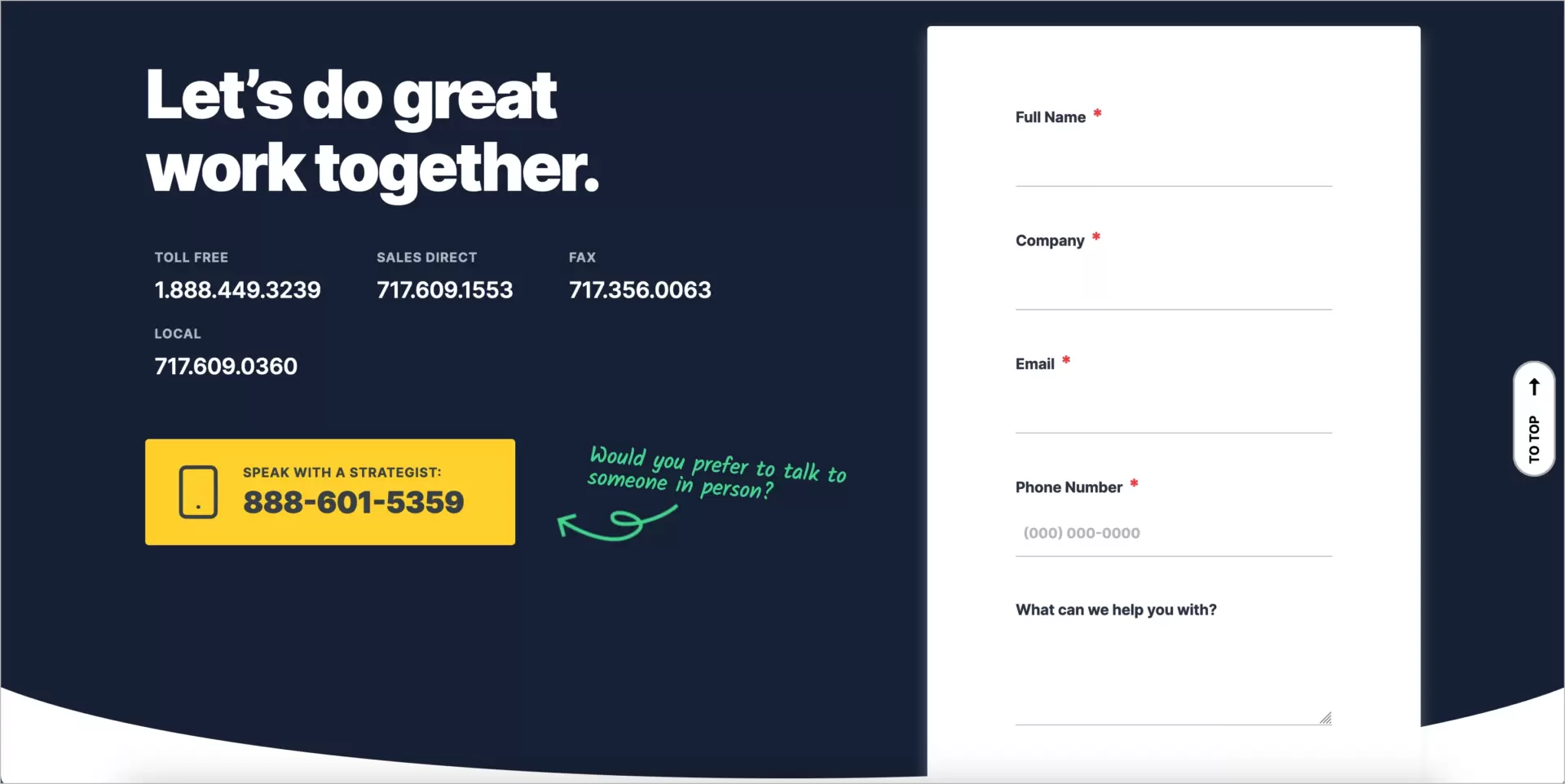
#8 Best B2B Lead Generation Form: IDC
The top B2B lead generation form was made by IDC, as they successfully avoided distractions particularly disliked by B2B clients.
B2B companies make business decisions based on data and previous in-depth research, so they typically don’t need bells and whistles on landing pages. Instead of a flood of visuals and unnecessary distractors, it’s good to keep things as simple as possible, like in the following example by IDC:
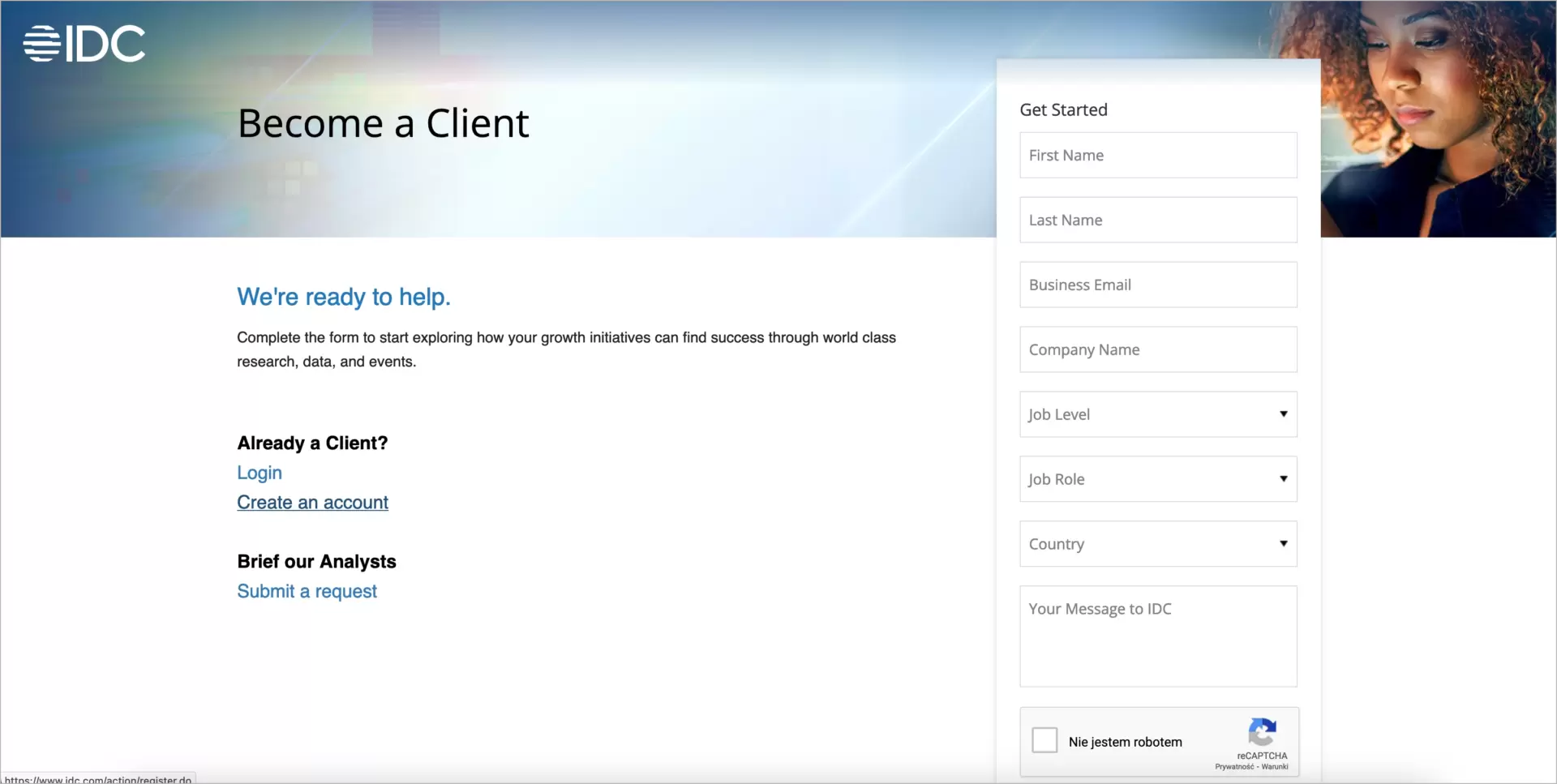
Another plus for no telephone number field. Some studies showed that including it in the form may cause an increase in an abandonment rate of 37% (Deeksha A., How to improve a contact form for more conversion?, 2019).
The weak spot is that the form is a bit too large, and it surpasses the fold line. Furthermore, one or two fields can easily be removed.
Pro-Tip: Such a raw layout without exposing the uniqueness of the product may work only if the potential client has been carefully nurtured. MarketingSherpa states that 73% of leads are not ready to buy (D. Kirkpatrick, The Complex Sale: Lead scoring effort increases conversion 79%, 2012), and this is why they won’t convert, even if the form is properly arranged.
What Types of Forms Generate Leads?
Lead generation forms come in various forms, including contact forms, registration forms, newsletter sign-up forms, event registration forms, donation forms, popup forms, and social media lead generation forms. The choice of form depends on your specific goals and target audience.
Get 111 Landing Page Examples—The Ultimate Guide for FREE
When is Splitting a Form into a Funnel a Better Option?
Splitting a lead generation form into a funnel or a multi-step process can be a better option in several situations:
Complex Information Gathering: When collecting a substantial amount of information from leads, breaking the form into multiple steps can make it more manageable for users. Users might be more willing to start a process if it appears shorter, and you can gather additional details progressively.
Improved User Experience: Long, single-page forms can be daunting and may discourage users from completing them. A multi-step funnel with clear progress indicators can create a sense of accomplishment and engage users.
Higher Conversion Rates: Sometimes, multi-step forms can lead to higher conversion rates than longer, single-page forms. Users are more likely to complete shorter forms and may be more invested as they progress through each step.
Qualification and Segmentation: Multi-step forms can help segment your leads more effectively. By asking specific qualifying questions in different steps, you can route leads to the appropriate sales or marketing funnels based on their responses.
Reduced Form Abandonment: Users who begin filling out a form but don’t complete it (form abandonment) can be encouraged to proceed by splitting the process into smaller, more manageable steps. You can also send reminders for users who abandon the form mid-process.
Personalization: Multi-step forms enable you to provide a more personalized experience. Based on the responses provided in earlier steps, you can dynamically adjust subsequent questions, tailoring the interaction to each user’s needs and interests.
Mobile Optimization: Long forms can be particularly challenging to navigate on mobile devices. A multi-step approach can enhance the mobile user experience by breaking the process into smaller, mobile-friendly steps.
Data Validation: Multi-step forms can incorporate data validation at each step, reducing the likelihood of users submitting incorrect or incomplete information.
However, it’s important to note that not all forms require a multi-step approach. For simpler lead capture forms with minimal fields, a single-page form may be more appropriate and less likely to deter users. The decision to split a form into a funnel should be based on factors such as the amount of information needed, user experience considerations, and your specific lead generation goals.
What is a Good Conversion Rate on Lead Generation Form?
The ideal conversion rate for lead generation forms can vary depending on factors like industry, audience, and form complexity. However, a 10-20% conversion rate is generally considered a good benchmark. Continuous optimization efforts should improve this rate over time.
Inseparable Duo: Lead Generation and Landing Pages
Lead generation forms and landing pages are indispensable tools for businesses and marketers seeking to capture valuable information from potential customers. These dedicated web pages, designed with a clear and focused purpose, offer a tailored approach that maximizes the chances of converting visitors into leads. By following best practices, optimizing your forms and landing pages, and leveraging examples of successful lead generation forms, you can enhance your lead generation efforts and ultimately drive more conversions.
Remember that constant testing and refinement are vital to ensuring your forms and landing pages remain effective in a rapidly changing digital landscape. Landing pages, in particular, offer a strategic choice for lead generation, providing a seamless and targeted user experience. Customizing landing pages to align with your specific goals and target audience can significantly enhance your lead-generation efforts and overall marketing success. This is why it is so important to choose the right tool. The better the builder you bet on, the better will be your outcomes (traffic, leads, purchases, etc.).
In Landingi you can build pages at scale using tons of conversion-driven templates and customize them with images, videos, pop-ups, counters, sliders, or almost whatever you like. You may also use a built-in form builder, which allows you to create customizable forms for data collection (leads), feedback, downloads, etc. And at the top of it, you can measure the effects of your marketing campaigns with dashboards, A/B tests, and EventTracker (the perfect counterpart to Google Analytics for landing pages), which allows you to determine what yields the best results and make decisions rooted in data.
Try Landingi for free!

